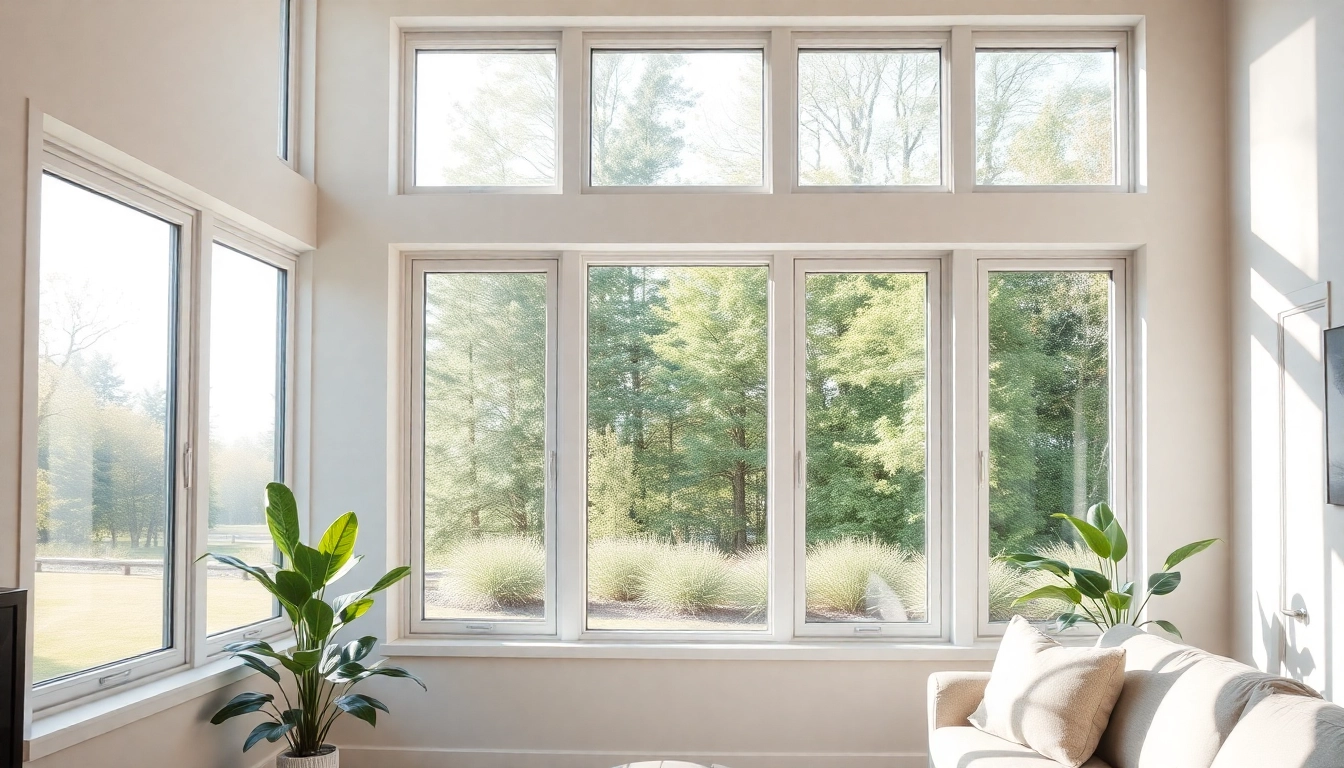Introduction to Replacement Windows
Replacement windows are a practical upgrade that returns comfort, efficiency, and beauty to your home. Old or poorly performing windows can cause drafts, condensation, and rising energy costs, while modern units deliver tighter seals, better insulation, and quieter living spaces. The decision to replace windows involves balancing style, material, and performance to suit your climate, home design, and budget. A thoughtful replacement project can also reduce maintenance and improve curb appeal, potentially increasing both daily comfort and resale appeal over time.
To start, explore our guide on Replacement Windows and learn how the right choices pay off in energy savings, noise reduction, and year-round comfort.
Choosing Replacement Windows: Styles, Materials, and Features
Popular Styles: Casement, Double-Hung, Slider
Casement windows hinge at the side and sweep outward with a crank, offering superb air sealing and unobstructed views. Double-hung windows slide vertically, making them easy to operate in tight spaces and accessible for cleaning. Sliding windows move horizontally on a track, delivering wide apertures with simple hardware. Each style suits different rooms and architecture: casement for tight drafts, double-hung for traditional homes, and sliders for wide basements or living rooms with low furniture.
Frame Materials: Vinyl, Wood, Aluminum
Vinyl frames deliver low maintenance and strong energy performance at a moderate price, and they resist warping in varying climates. Wood frames offer natural beauty and a warm feel but require ongoing care to prevent moisture damage. Aluminum frames are slim and durable, often used for contemporary designs and large openings, though they can transfer more heat or cold if not paired with insulating glazing. When selecting materials, consider local weather, budget, and whether you want a traditional or modern look.
Glazing Options and Energy Features
Glazing choices include clear, low-emissivity (low-E) coatings, and gas-filled panes that improve insulation. Laminated glass can increase security and reduce noise, while inert gas fills (such as argon or krypton) further limit heat transfer. For most homes, a combination of an energy-efficient glass package and an appropriate spacer system yields the best balance of comfort and value.
Energy Efficiency and Performance
Understanding U-Factor, SHGC, and Solar Gain
U-Factor measures how well a window prevents heat transfer; lower numbers mean better insulation. SHGC, or Solar Heat Gain Coefficient, indicates how much solar energy passes through the glass; lower SHGC reduces heat from the sun in warm climates, while higher SHGC can help with winter warmth in cold climates. When evaluating windows, compare products with clearly labeled U-factor and SHGC values that suit your local climate.
Glass Configurations: Double vs Triple Glazing
Double glazing uses two panes with a spacer and an air or gas-filled cavity, while triple glazing adds a third pane for additional insulation. Triple-glazed units offer superior energy performance, especially in extreme climates or poorly insulated homes, but they can be heavier and more expensive to install. Your selection should balance comfort, structural limits, and budget.
Long-Term Savings with Efficient Replacement Windows
Efficient windows reduce heating and cooling loads, which translates into lower utility bills over time. The exact payback depends on climate, window orientation, and energy prices, but many homes experience meaningful savings within a decade, especially when combined with proper insulation and air sealing. Pairing efficient glazing with tight seals and quality installation maximizes the return.
Installation Process and Contractor Selection
Preparation and Measurements for Replacement Windows
Accurate measurements are the foundation of a successful installation. A professional will verify rough openings, assess existing frame condition, and confirm whether any resizing or reinforcement is needed. They’ll also plan for flashing, drainage, and interior finishing to ensure a clean, weather-tight result. Involve the installer early—sharing local weather patterns and shade considerations helps tailor the project.
Installation Steps and Timelines
The typical process begins with protecting surrounding finishes, removing old sashes, and preparing the opening. New units are then trimmed, flashed, and sealed to control air and water infiltration. Interior finish work, such as casing or trim replacement, follows, along with a final performance check. Timelines vary by number of openings and existing frames but planning for several days per home is prudent.
Common Pitfalls and Quality Checks
Poorly aligned frames, inadequate flashing, or gaps in sealing are common issues that compromise performance. A thorough quality check should include water spray testing, air infiltration assessment, and a review of flashing details around corners and sills. Request documentation of installation workmanship and ensure that both window and labor warranties are clearly stated in writing.
Cost, Warranties, and ROI
Budgeting, Quotes, and What’s Included
Window replacement costs vary with size, material, glazing, and installation complexity. When evaluating quotes, look for clarity about products, labor, disposal of old windows, and any permits or updates to interior trim. A comprehensive quote should itemize each opening and provide a transparent timeline for delivery and installation.
Warranty Coverage and Service
Most providers offer multiple warranties covering different components: the frame, the glass, and installation workmanship. Understanding the duration, what triggers coverage, and whether service calls are included helps you compare options and avoid surprise costs later.
ROI: Energy Savings and Home Value Impact
Replacing windows often yields a meaningful improvement in comfort and energy use, which can enhance perceived home value and attract buyers if you choose a style that complements your home. While exact ROI varies, homeowners who pair replacement with proper insulation and sealing frequently report a noticeable upgrade in daily living and long-term affordability.
In summary, replacement windows are a strategic home improvement that blends comfort, efficiency, and value. By understanding styles, materials, glazing, and installation considerations, homeowners can make informed choices that pay dividends over time.

